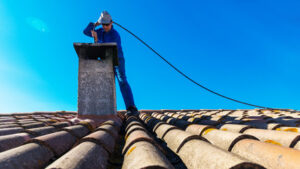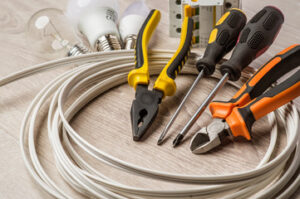The process of getting Montana Solar panels installed can take anywhere from a few weeks to a few months. It all depends on what type of system you need, how long it takes to secure the necessary permits, and how quickly your solar provider can get everything started.

A reputable installer will help you select your solar solution and manage the paperwork involved. They will also provide warranties to protect your investment.
Roof-mounted solar systems are a popular choice for residential power generation. These systems can reduce or eliminate utility bills and reduce your dependence on the electric grid. They also provide a way to offset your carbon footprint and move away from fossil fuels. In addition, they allow you to sell excess electricity back to the local utility company.
There are a few different roof-mounted solar mounting options, including railed and pole mounts. Railed solar systems attach to the roof with rails and a series of clamps that connect each panel to the rails. This allows for a more flexible design that can accommodate the roof’s unique structure and shape. Depending on your home’s electricity needs and location, you may want to consider adding an auxiliary inverter to further maximize energy production.
Pole mounts are another option that can be attached to the ground with a base or a foundation. They can be designed to accommodate a variety of sub-structure types, such as carports or pergolas. They can be positioned to produce energy in the most efficient direction and to maximize sunlight exposure. They can also be installed with a single- or dual-axis tracking system that follows the sun throughout the day to capture more energy.
When choosing a solar system, be sure to choose a manufacturer that provides quality components and comprehensive technical support. IronRidge, for example, has been designing and manufacturing structural hardware for over a quarter of a century. Their products are designed to be strong, lightweight, and cost-effective. They are also rigorously tested to meet industry standards and requirements.
It is also important to have a professional inspect the solar array regularly for any damage or potential problems. This will help to ensure that all fasteners are tightened and that the seals are in good condition. In addition, it is a good idea to have regular cleaning of the solar panels and the roof area. Keeping the site clean and free of debris can prolong the lifespan of the solar system and prevent the need for costly repairs or replacement.
Ground Mounting
Ground mount solar systems, as the name suggests, are designed to sit on the ground rather than on top of a home. They’re ideal for commercial spaces or open plots of land, where they can take full advantage of sunlight. They’re also easier to access than rooftop solar arrays, making them a better choice for homeowners who want to play an active role in maintaining their system (i.e. cleaning snow or debris off the panels).
There are two main types of ground-mounted solar systems: standard ground mounts and pole-mount systems. Standard ground mounts use metal framing anchored into the ground to hold solar panels at a fixed angle. Many of these systems are oriented due South to maximize energy production. Pole-mount systems, on the other hand, offer more flexibility in positioning panels. These systems can be positioned on various terrains and are usually supported by one or more tall poles. Most pole-mount systems feature a single or dual-axis tracking system that automatically adjusts the panels’ position to follow the sun throughout the day.
The cost of a ground-mounted solar system can vary depending on the size and location of your property. Larger ground-mounted systems may require extensive site preparation, such as clearing the surrounding area of vegetation and rocks to allow for proper installation. In addition, the cost of a ground-mounted system will likely be higher than a roof-mounted system, due to longer wiring runs that can cause significant voltage drop over long distances.
While the upfront costs of a ground-mounted system are higher than a roof-mounted system, they may offer greater savings over the long run. This is especially true for those who live in rural or remote areas, where local utilities often charge significantly more for electricity than those in larger cities.
As with all energy-generating systems, regular maintenance is essential to keeping your solar array at peak performance. Luckily, there are many easy ways to keep your solar array clean and running smoothly. The best way to ensure your ground-mounted solar panel installation is performing as well as possible is to hire an experienced installer. Nuance Energy offers cutting-edge solutions to help you accelerate your solar installation projects.
Battery Storage
Battery storage solar installations offer a unique solution for homeowners who want to maximize the benefits of their solar energy systems. A home battery can provide cost-saving electricity during peak demand periods, and it can also serve as backup power during outages. Battery storage can be installed alone or with a solar panel system.
Battery systems are often used to take advantage of low utility rates, such as those that occur during the night or on weekends. This is known as ‘peak shaving’ and ‘energy arbitrage’, and it can significantly reduce electricity costs. A battery can also be utilized to offset the cost of a solar system, especially in areas with high utility rates or time-of-use pricing.
Home battery storage can also be used for grid services, including providing ancillary functions like frequency regulation and voltage control to the grid. This can help utilities increase the share of renewable energy while maintaining a reliable power supply to their customers.
While battery storage isn’t right for every homeowner, it offers some compelling benefits in New York, where expensive time-of-use electricity and frequent outages can be costly. A battery can keep critical loads like refrigerators running during a power outage, and it can be combined with a solar array to create an integrated system that’s self-sufficient. Additionally, homeowners can earn cash rewards from PSEG Long Island by deploying a grid-tied battery configured for solar self-consumption under their Battery Rewards program.
There are many reasons to consider a battery storage solar installation, but the best way to determine your needs is to contact a professional installer and have them assess your site. They can design a system that meets your energy goals, and they’ll recommend the right type and size of batteries for your needs.
A battery system is most often powered by lithium-ion technology, which is also found in electric vehicles and laptops. For the most efficient use of your solar energy, a battery should be located within close proximity to your solar panels and inverter. Once the solar battery is installed, it will be connected to a monitoring system that ensures all components are working as expected.
Inverter
Solar inverters are the backbone of your solar energy system. They convert DC electricity from your solar panels into AC electricity that is used by appliances and the grid. There are several different types of solar inverters including microinverters, power optimizers or string inverters. Your installer will recommend the best type of solar inverter for your system based on your property conditions and energy needs.
Inverters are connected to solar panels using DC cables. Sunlight energizes electrons in the solar cells, creating a direct current that is sent to your inverter through the cable. Your inverter converts this DC current into usable AC electricity and ensures that voltage fluctuations between panels connected together are stabilized. It is also where the energy generated from your solar panels and battery is transferred to the utility grid.
The inverter can also be integrated into a solar energy storage system to enable you to store your excess solar energy for use at night or during utility power outages. This is known as a hybrid inverter system.
It is important to place your solar inverter in an environment that is free from heat, excessive dust and moisture. If it is not placed in a safe location, your solar inverter could overheat and damage the system. It is also important that your inverter has proper ventilation.
One of the most common mistakes made during solar inverter installation is failing to properly ground your system. This step is essential for preventing electric shocks and other electrical hazards.
Your inverter can be connected to your home’s electricity supply through either a single-phase or three-phase connection. Single-phase connections use 3 wires to provide mains electricity, while three-phase supplies use 5 wires. If you are connecting your solar inverter to a grid-connected system, your installer will also install a dual meter. This is necessary to record the amount of electricity you are producing and consuming at your home.
Choosing the right solar inverter for your system is important for long-term energy production and savings. There are many specific features that impact this decision, such as the complexity of your roof and whether it is prone to shading or variable sunlight conditions. Premium microinverters offer better performance for systems with these challenges and can maximize energy production in comparison to string inverter-based systems.








